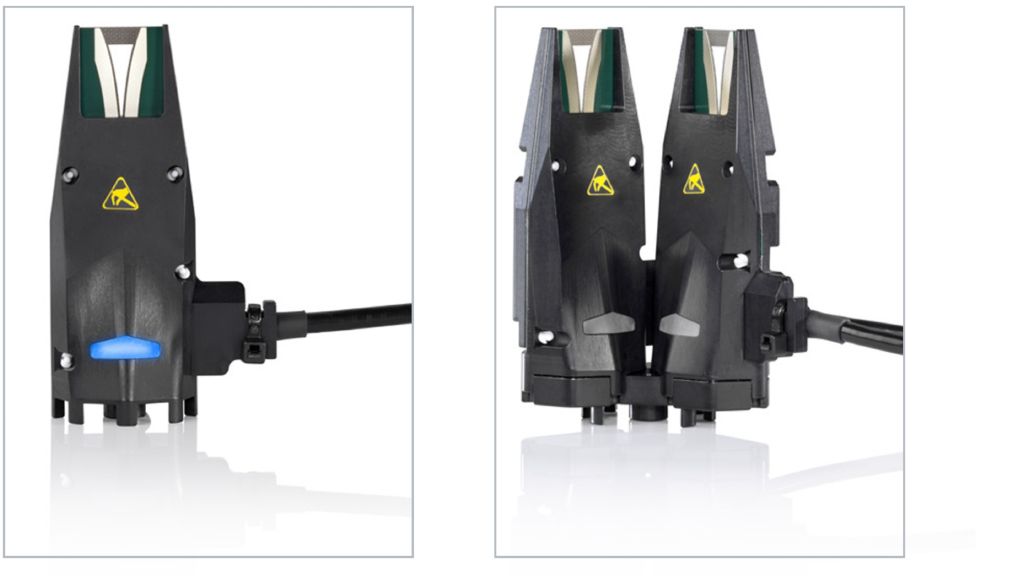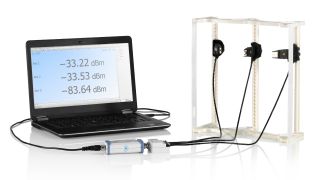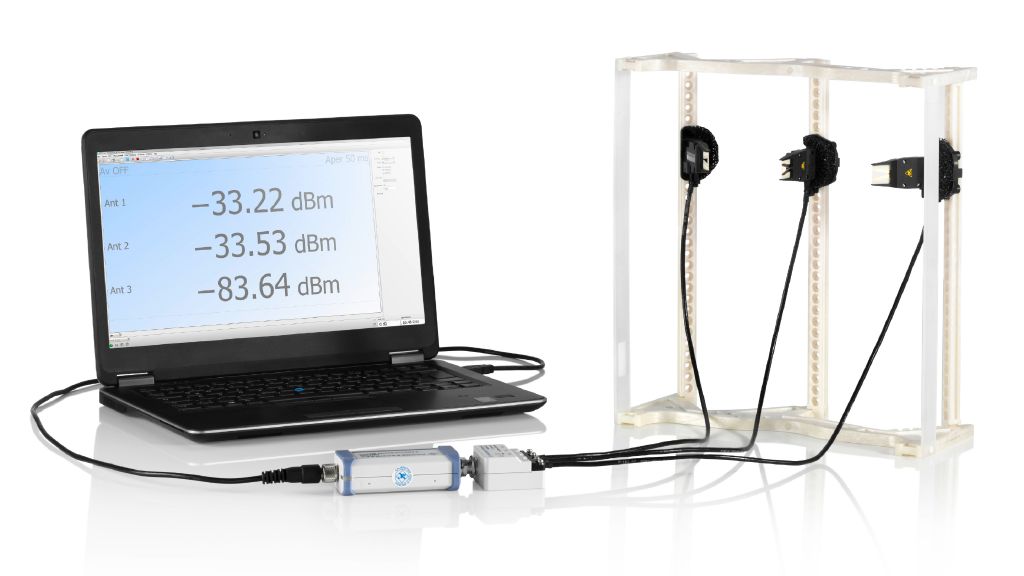Minimize measurement uncertainty for EIRP OTA measurements
Simple, repeatable setup. Accurate, repeatable results.

Simple, repeatable setup. Accurate, repeatable results.


R&S®NRPM-A90 (left) and R&S®NRPM-A90D (right) antenna modules for single- and dual-polarized measurements
Measuring absolute power levels precisely and accurately in over-the-air (OTA) scenarios is challenging, since traditional setups are based on several different components. Additionally, for most antennas, cables and adapters, it is difficult or expensive to obtain definite uncertainty specifications. Therefore, a reliable and/or warranted system calibration is often not possible, or can only be done by using components that are more expensive than necessary.


OTA power sensor setup using three R&S®NRPM-A90 antenna modules, an R&S®NRMP-Z3 interface module, an R&S®NRPM3 sensor module and an R&S®NRP-ZKU USB interface cable (for the direct readout of the signal with a monitoring PC)
The R&S®NRPM-A90(D) OTA power sensors remove many of these uncertainties by design and give a definite specification for the remaining ones. This is achieved by combining an antenna and a power detector and rendering additional RF cables and adapters superfluous. Subsequently, the complete design is calibrated for combination with the R&S®NRPM3 readout modules. This achieves an absolute equivalent isotopically radiated power (EIRP) measurement of a signal ready to be analyzed on a USB or Ethernet interface with a warranted uncertainty smaller than 1 dB. In contrast, a traditional setup would not even yield warranted uncertainties from 2 dB to 3 dB at the same price point.
Thanks to the three-channel architecture of the R&S®NRPM3, one readout module makes it possible to measure three independent antenna modules at the same time, enabling characterization of a wave front in different polarizations and positions. This reduces initial investment requirements as well as the time needed for testing.


Contributions to the uncertainty of a standard setup
In a traditional setup (see figure below) the following components are the biggest contributors to the uncertainty of the overall measurements:
Gain of the antenna and other passive components such as connectors, adapters and cables:
Typical calibrations yield from 1 dB to 1.5 dB, best and extremely cost-intensive antenna calibrations yield from 0.1 dB to 0.2 dB.
For the R&S®NRPM-A90(D), the gain uncertainty is already included in the total uncertainty
Mechanical alignment error of the antenna with respect to the beam:
Especially for antennas with narrow beamwidth, i.e. high gain antennas, this is challenging; typically, the uncertainty contribution is in the order of 0.3 dB per degree.
For the R&S®NRPM-A90(D), an alignment of ±2° is already accounted for in the total uncertainty
Phase center position, i.e. the effective distance d between DUT and antenna:
Especially when measuring in a chamber, i.e. small distances, this contribution is large; furthermore, the correct position is normally not specified for standard antennas.
For the R&S®NRPM-A90(D), the exact and correct position as well as the uncertainty are specified in the data sheet.
Additionally, environmental effects such as humidity and temperature (both specified for the R&S®NRPM-A90(D)), polarization alignment (accounted for up to 5°), radar cross section, disturbers and multipath propagation contribute to the uncertainty. More details can be found in the data sheet (PD 5215.8606.22).
Overall, a traditional setup yields a typical combined uncertainty from 1 dB to 3 dB under normal environmental conditions. In contrast, the R&S®NRMP-A90(D) has a typical total warranted uncertainty from 0.49 dB to 0.72 dB. Using additional measurement chambers and the corresponding accessories helps further reduce influences by disturbers.
The R&S®NRPM-A90(D) brings an unprecedented level of accuracy to absolute OTA measurements at an extremely reduced total cost of ownership. Furthermore, the detailed specifications enable you to determine the measurement uncertainty also for corner cases.
Typical setup for measuring the EIRP of a DUT: Traditionally it comprises an antenna, connectors, cables and a power measurement unit. In the case of the R&S®NRPM-A90(D), all of this is integrated into a single instrument.